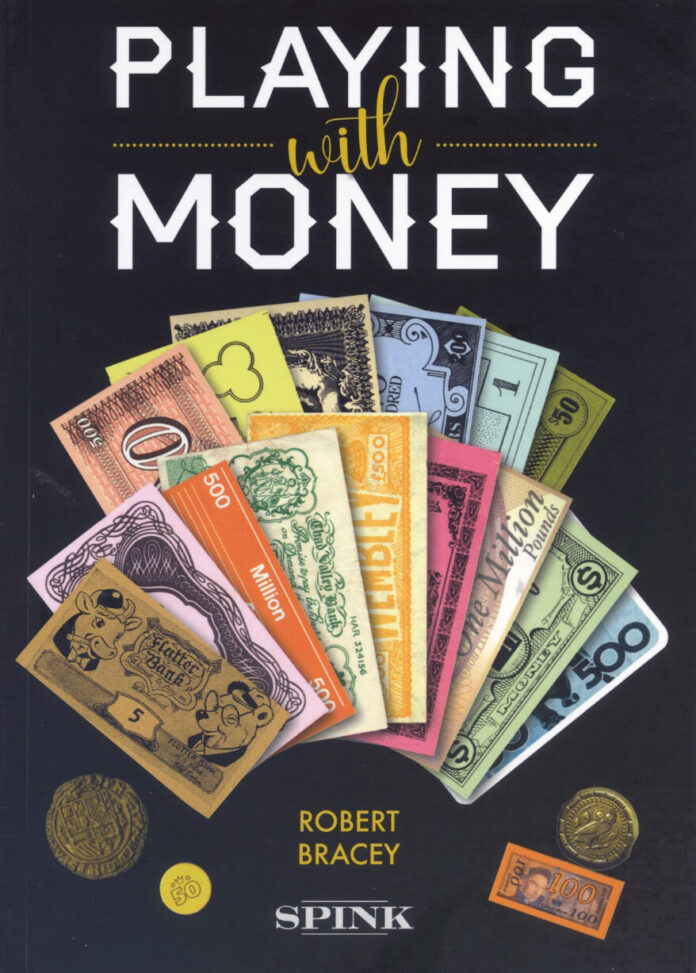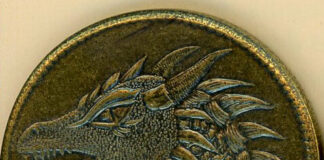
190,000 people visited the Essen Game Fair in 2019. What did they do there? Well, they played. They tried out the latest board games, which enable all generations to forget about their everyday life. However, the first industrially produced board games served a completely different purpose. They were not meant to distract but to educate and to instruct children, to teach them important things about life in a playful way. And what is the most important thing in today’s life? Admit it. Even if you would like to give idealistic answers to this question, you must face up to the fact that our daily life would not work without money. And that is why money plays an essential role in numerous games – whether one wants to win it or make the best use of it in order to create a better world …
The author starts his booklet with a defence. He asks how it can be that such a sublime institution as the British Museum deals with this topic. A defence that would not be necessary. We know the British Museum as an institution that always thought a little further than others when it came to documenting the human life. Already a decade ago, a representative of the British Museum presented at an ICOMON meeting the thoughts of the Coins and Medals Department on how to include modern computer money into the collection in order to preserve it for future generations and to catalogue it.
It was at least as avant-garde when the British Museum purchased the first toy money for its collection in 1863. Only two years later it was able to acquire an exhaustive private collection of toy money. Today it owns a large collection of board games dealing with the topic of money. These objects are categorised as “Paranumismatics”. Among them are historically interesting games, for example a game created by Norman Angell in 1931 to support a hypothesis that he had brought forward in detail in his book “The Great Illusion” in 1913: Nobody can win money because of a war. While a book can only provide theoretical considerations, which one may believe or not, a game reveals the existing connections in an indisputable way. Perhaps Norman Angell was awarded the Nobel Peace Prize in 1933 also due to this clever PR trick?
This example shows already that games reflect our society’s conception of money in a clearer way than a single banknote ever could. Who would not remember the gorgeous evenings of his youth spent playing Monopoly, when piles of money made the most unscrupulous capitalist the winner? Toy money is much more than a playful imitation of banknotes and coins – as one part of a game, it reflects our society and the theories the latter is built on.
In his meaty booklet, Robert Bracey focuses on this side of toy money. He does not write a catalogue for the exhibition Playing with Money, which can be visited until 29 September 2019 in the British Museum. He does not write a catalogue of “toy money types”, but he provides us with information regarding general and economic history by presenting interesting objects of the British Museum’s collection. He illustrates their historical context in detail and thus the booklet is better characterised as an essay on board games that deal with money than as a historical paper on toy money.
If you are looking for a catalogue to categorize your toy money, you do not need Playing with Money. If you want to know which different types of toy money existed in the past and the present, you will also be disappointed. But if you want to gain insight into the question of why the playing human being and his board games can be useful in order to understand which attitude towards money people had during certain periods of time of the 20th century, you should definitely read this essay. It is not only an enrichment for numismatists but above all for economic historians and social scientists.
And the best: The new insights are conveyed to the reader almost playfully.
The book was published by Spink & Son and you can purchase it on their website.
Of course, we presented the display “Playing with Money” in an article of CoinsWeekly.




